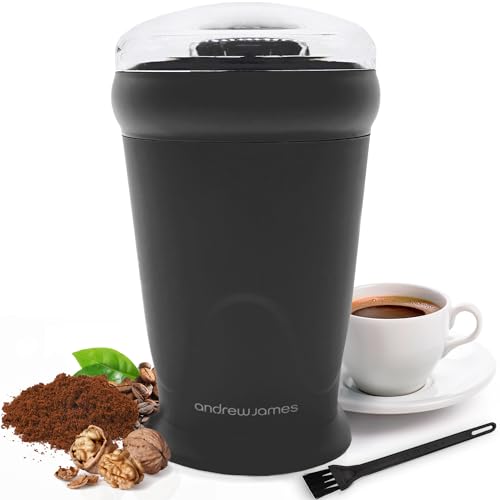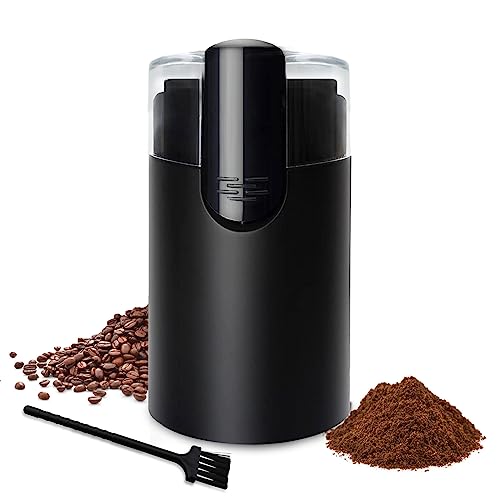Blog entry by Audrea Nicastro
 Coffee
Makers With a Built-In coffee machine grinder (https://yogaasanas.science/wiki/This_Is_The_Best_Budget_Espresso_Grinder_Case_Study_Youll_Never_Forget)
Coffee
Makers With a Built-In coffee machine grinder (https://yogaasanas.science/wiki/This_Is_The_Best_Budget_Espresso_Grinder_Case_Study_Youll_Never_Forget)
Coffee lovers know that an ideal cup of coffee requires a lot of steps and motivation is usually low in the morning. Coffee makers with a built-in grinder take the guesswork out of the process, eliminating the need for measuring and grinding beans prior to time.
How to Grind Coffee
It is crucial to grind your beans prior to making the most delicious coffee. Grinding your beans changes the size of the particles as well as the surface area, making it easier for water to mix with and extract flavors from the coffee. The time between grinding and brewing can affect the quality of coffee. If you grind your beans ahead of time, they will quickly begin to begin to oxidize, ruining their flavor.
The type of grinder you use will also influence how the coffee maker with grinder is ground. Burr grinders and Blade grinders are two of the main types. Burr grinders comprise a set of rotating burrs which crush the beans into smaller pieces that are consistent. They generally are quieter and more reliable than blade grinders.
Blade grinders, which consist of propellor-like blades, chop beans into smaller pieces. They're typically louder and less reliable than burr grinders, however they can be an affordable alternative.
It is essential to only grind the amount of stainless steel coffee grinder you need at any given point. Some grinders come with hoppers that have different capacities, which may affect the number of cups or shots you can grind at once. Additionally, different grinder models might require different amounts of effort to alter the size of the grind.
If you're using a grinder with burrs, you can adjust the size of the ground particles by turning a collar on the top of the grinder, which causes it to move the burrs closer together or further apart. You can also play with the settings until you discover one that works for your brewing technique.
It's possible to test a bit with different grind sizes according to the brewing method you employ before you find one that you like. There are recommendations from manufacturers and coffee experts, but it's ultimately up to you to find the right blend of size and flavor for your personal taste. For instance, you might have heard that a French press is best suited to coarsely ground coffee, or espresso requires a fine grind. These suggestions may not be accurate. Different brewers need different amounts of water and heat to extract their flavours.
Burr Grinders
 A
burr
smart grinder pro consists of two interlocking
components--one stationary and the other rotating. Both have
sharp surfaces that crush the beans as they move through. This
lets you regulate the size of your grind which is crucial for a
variety of brewing methods. It also generates less heat than
blade grinders, which helps preserve the taste of your coffee.
A
burr
smart grinder pro consists of two interlocking
components--one stationary and the other rotating. Both have
sharp surfaces that crush the beans as they move through. This
lets you regulate the size of your grind which is crucial for a
variety of brewing methods. It also generates less heat than
blade grinders, which helps preserve the taste of your coffee.
In general, there are two types of burr grinders: conical and flat. Conical burrs are conical rings with serrated edges. They grind against each other to produce an intermediate-to-fine grind. They can be found in most home grinders. Flat burr grinders come with two identical rings that are serrated and grind against each other to create medium to coarse grind. They can be found on some of the larger commercial grinding machines.
The geometry of the two types of burr mills is different, which affects the size distribution of the grinds. They also operate at varying speeds, which could affect the flavor of your espresso. A top burr grinder is designed to spin at a low RPM that means it produces less static and heat. A less-quality grinder will spin at a faster speed, which can cause the burrs to become stuck together, leaving behind a residue that could alter future batches of coffee.
Both kinds of burr grinders can be made of ceramic, metal or a combination of the two. Metal burrs are typically more durable and less susceptible to being damaged, whereas ceramic is more fragile and could chip or crack if it comes into contact with small stones or other debris.
Most people select a burr grinder for its ability to provide an even, consistent grind. It can take a while to get the perfect consistency and you may need to adjust the settings of your grinder as it runs. After each use, wash the grinder to get rid of any uncooked beans or overly roast ones that may have gotten trapped between the burrs.
The temperature of the water used to brew your coffee can also affect the granules. If the water is too hot, it will affect the granules, causing them to be burned and alter their flavor. The ideal temperature for brewing is around 195 degrees Fahrenheit.
Blade Grinders
These grinders use an axis that rotates to chop beans. They resemble mini blenders and are a popular choice due to their lower price and smaller size. They are also great for those who do not plan to drink coffee black however, but would like to add sugar or other flavors.
The issue is that blade grinders can't provide a consistent size of grind. The chopping action of the blades chops some beans into smaller pieces and others into larger pieces making an unbalanced mix of ground that may vary in size from coarse to fine. The uneven distribution of sizes can lead to excessive or under-extraction, which affects the taste of the cup.
The whirling motion can also cause the beans to burn during the process of grinding. This can alter the flavor of your coffee, since the beans are less likely to react with hot water and release the flavor.
Blade grinders can also create more dust while they're in use. This can be an issue in kitchens that are packed. The dust could be a health risk since it could be contaminated by harmful microbes that could contaminate your final coffee. The sticky residue that blade grinders leave behind could make them difficult to clean.
Contrary to this, burr grinders depend on two rotating abrasive surfaces to grind the beans to a uniformly consistent ground size. The burr grinders do this without the use of adjustable settings. This allows the user to choose the precise size of grinding depending on the method of brewing. The uniform grind allows water to pass through the ground in a uniform manner and result in a uniform extraction of coffee's flavor profile. Burr grinders are more expensive and require more maintenance however, they are more durable. Before making a choice be sure to consider your budget, brewing techniques and counter space. It may be worth it to invest in a burr mill.
Dosing Grinders
Dosing coffee grinders are one type of coffee mill that is designed to only grind the amount of beans required to make a cup of coffee. This is a well-liked grinder for home use because it eliminates the need to store ground coffee between uses, and ensures the beans are freshest when they are brewed. This can help to achieve optimal flavor extraction from the coffee and can also reduce waste.
The grinder is equipped with an internal chamber which can be used to capture the coffee grounds and hold it before it is dispensed into the portafilter. The chamber is usually situated near the top and is made up of six sections of the same dimensions. As the coffee grinds out of the grinding burrs it drops into one of these sections, where it is then rotated by an adjustable handle that can be pulled to control the speed at which the sections are moved. When the sections are rotated the coffee is delivered to your portafilter.
There are a handful of grinders that can perform this effectively. They tend to be the best in terms quality and consistency. (Titan class). However, there are others that aren't ideal for this purpose and could result in inconsistent results or even overfilling your portafilter. This is why we suggest using a dedicated single dosing grinder for espresso when possible as well as for other types of brewing it is best to simply learn to eyeball the amount of stainless steel coffee grinder required.
Rancilio Rocky and Gaggia MDF are some of the most popular dosing grinders available. They are all great options for espresso lovers who live at home. Ceado also has a single-dosing model, the E37SD. This model has been a hit in recent times, and was dubbed a "Niche Zero Killer". The E37SD is equipped with a massive 83mm OpalGlide coated burr that creates consistently smooth grinds with almost zero retention and can be adjusted to match any method of the brewing process.
